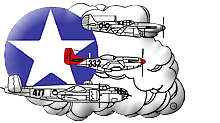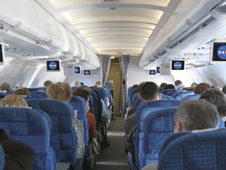On Friday, Feb. 15, NASA Television will provide commentary from 2 – 2:30 p.m. EST during the close, but safe, flyby of the small near-Earth asteroid named 2012 DA14. The half-hour broadcast from NASA’s Jet Propulsion Laboratory in Pasadena, Calif., will incorporate real-time animation to show the location of the asteroid in relation to Earth, along with live or near real-time views of the asteroid from observatories in Australia, weather permitting. The commentary will be available via NASA TV and streamed live online at https://www.nasa.gov/ntv and http://www.ustream.tv/nasajpl2.
In addition to the commentary, near real-time imagery of the asteroid’s flyby, made available to NASA by astronomers in Australia and Europe, weather permitting, will be streamed beginning at about noon EST and continuing through the afternoon at http://www.ustream.tv/nasajpl2.
Also, a Ustream feed of the flyby from a telescope at NASA’s Marshall Space Flight Center in Huntsville, Ala., will be streamed for three hours starting at 9 p.m. EST. To view the feed and ask researchers questions about the flyby via Twitter, visit http://www.ustream.tv/channel/nasa-msfc.
For more information, including graphics and animations showing the flyby of 2012 DA14, visit www.nasa.gov/asteroidflyby.

 Join Dr. Liz Warren in this NASA Now classroom video as she discusses some very serious negative long-term effects and some interesting short-term changes the human body experiences in space.
Join Dr. Liz Warren in this NASA Now classroom video as she discusses some very serious negative long-term effects and some interesting short-term changes the human body experiences in space. Connect with NASA’s Digital Learning Network, and let your students explore history and science with NASA and Tuskegee. On Feb. 20, from 2-3 p.m. EST, your students will have a chance to discuss the early frontiers of aviation with a contrail scientist and a pilot who is president of the Howard Baugh Chapter-Tuskegee in Petersburg, Va.
Connect with NASA’s Digital Learning Network, and let your students explore history and science with NASA and Tuskegee. On Feb. 20, from 2-3 p.m. EST, your students will have a chance to discuss the early frontiers of aviation with a contrail scientist and a pilot who is president of the Howard Baugh Chapter-Tuskegee in Petersburg, Va. NASA participated in the inauguration of President Obama on Jan. 21 in Washington, D.C., with two floats and marchers in the inaugural parade. Full-size models of the Curiosity Mars rover and Orion, the multi-purpose capsule that will take our astronauts farther into space than ever, were featured alongside Curiosity team members from NASA’s Jet Propulsion Laboratory as well as current and former astronauts.
NASA participated in the inauguration of President Obama on Jan. 21 in Washington, D.C., with two floats and marchers in the inaugural parade. Full-size models of the Curiosity Mars rover and Orion, the multi-purpose capsule that will take our astronauts farther into space than ever, were featured alongside Curiosity team members from NASA’s Jet Propulsion Laboratory as well as current and former astronauts.  Are you traveling by air this year? If so, then you’ll be in the company of millions who are directly benefiting from the ongoing research performed by NASA’s aeronautical innovators.
Are you traveling by air this year? If so, then you’ll be in the company of millions who are directly benefiting from the ongoing research performed by NASA’s aeronautical innovators.